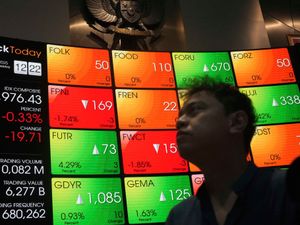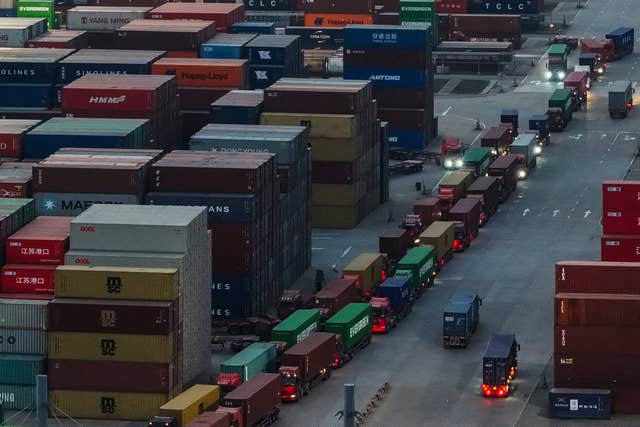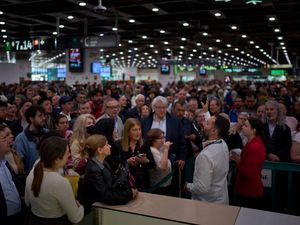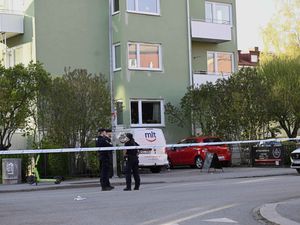Trump’s sweeping new tariffs take effect
The US President has imposed steeper rates for countries which he says run trade surpluses with America.

US President Donald Trump’s sweeping new tariffs have gone into full effect.
When Mr Trump announced the latest round of tariffs on April 2, he declared that the US would now tax nearly all of America’s trading partners at a minimum of 10% – and impose steeper rates for countries that he says run trade surpluses with the US.
The 10% baseline had already gone into effect on Saturday. Mr Trump’s higher import tax rates on dozens of countries and territories took hold at midnight, Washington DC time (5am BST).
The steeper levies run as high as 50% – with that biggest rate landing on small economies that trade little with the US, including the African kingdom of Lesotho.

Some other rates include a tax of 47% on imports from Madagascar, 46% on Vietnam, 32% on Taiwan, 25% on South Korea, 24% on Japan and 20% on the European Union.
Some of these new tariffs build on previous trade measures.
Mr Trump last week announced a tariff of 34% on China, for example, which would come on top of 20% levies he imposed on the country earlier this year.
Mr Trump has since threatened to add an another 50% levy on Chinese goods in response to Beijing’s recently promised retaliation. That would bring the combined total to 104% against China.
China has retaliated by raising tariffs to 84% on goods coming from the US.
South Korea has launched an emergency funding programme worth three trillion won (£1.56 billion) to help its automobile industry cope with the impact of increased US tariffs.
The government package includes expanded low-cost financing from state-run lenders, as well as a new financing programme backed by car giants Hyundai and Kia, along with financial institutions, aimed at supporting struggling carmakers and parts manufacturers. The government will also expand subsidies for electric vehicle purchases.
Garment manufacturers and exporters in Bangladesh, the world’s second largest after China, are worried about losing its share in the apparel market of the United States, which is imposing new tariffs of 37%.

The US is Bangladesh’s largest market as a single destination where the country’s nearly 39 billion dollar (£30.5 billion) industry exported apparel goods worth 7.34 billion dollars (£5.7 billion) in 2024.
Now, Bangladesh’s manufacturers say their US buyers are halting orders, which could help competitors like India and Pakistan overtake Bangladesh in the US market.
In early trading in the US, the S&P 500 was bobbing between small gains and losses. The index is about 19% below its record set less than two months ago.
The Dow Jones Industrial Average was down 170 points, or 0.5%, and the Nasdaq composite was 0.5% higher. Overseas markets were sharply lower.
Oil prices tumbled to their lowest level in more than four years and a huge sell-off in US Treasurys sent bond yields soaring.
Prices for US crude oil skidded more than 5% to 56.38 dollars per barrel, their lowest level since February 2021. Rapidly falling oil prices often signal investor pessimism about economic growth and can signal a recession ahead.
In contrast to the rest of the world, markets in China reversed toward small gains after it responded with an 84% tariff on US goods.
Asian and European shares slid.
Japan’s Nikkei 225 closed 3.9% lower, at 31,714.03. Hong Kong’s Hang Seng rose 0.7%, while the Shanghai Composite index closed 1.3% higher.
Thailand’s benchmark also rose, apparently due to speculation that Beijing might be preparing to hold talks with the Trump administration. The unconfirmed rumours helped push the future for the S&P 500 up 0.3%, while the figure for the Dow was unchanged.
Taiwan led the losses in Asia, as its Taiex plunged 5.8%. In India, the Sensex declined 0.5% as the central bank cut its benchmark interest rate, while Bangkok’s SET shed 0.8%.
South Korea’s Kospi lost 1.7% to 2,293.70, and the government said it would provide help for its beleaguered carmakers.
The S&P/ASX 200 in Australia declined 1.8% to 7,375.00. Shares in New Zealand also fell.
Markets in Europe also extended their losses, with Germany’s DAX sliding 4.1%. In Paris, the CAC 40 declined 3.9%.
A sell-off in long-term US Treasurys compounded the gloom around the tariffs and the damage they are expected to cause to the global economy.
The yield on the 10-year Treasury – normally considered a safe haven during volatile equity markets – jumped 17 basis points to 4.44% early on Wednesday.





